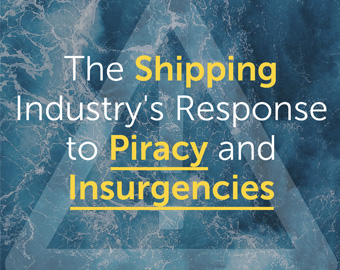The importance of documentation when shipping cargo overseas
10 September 2018
There are a wide variety of documents involved in the shipping process. Some may apply to you, whereas others may not – but failing to put the right forms in the right places can lead to serious consequences.
We’ve made things a little easier by creating a Shipping Documentation Guide which includes many of the different types of documents you’ll need to read, sign and send whenever you’re sending goods or requesting payments to various countries around the globe.
1. Getting paid
The most important thing for any exporter is getting paid. So, if you’re not being paid upfront for your goods, you need to be aware of your options.
Your first option is Cash Against Document (CAD) – where you send documents to your customer’s bank, and they collect these documents in return for payment.
The downside to CAD is that if someone orders goods and changes their mind, your goods are simply sat at the destination – with nothing forcing the customer to go there and pay.
Your second option is a Letter of Credit. This is more expensive than CAD and generally used when you know very little about your customer. With a Letter of Credit, the buyer agrees to pay the seller if the latter can present documents, that are listed as part of the Letter of Credit, which usually prove that the goods have been shipped and are to the agreed standard
In some countries, buyers can only make payments in certain ways. Examples include Bangladesh and India, where the government restrict you to dealing exclusively via Letters of Credit. This gives them improved control over their exchange requirements for foreign currency.
For either option, it’s better to ask for a deposit. The larger you can negotiate the better; this gives the consignee a great stake in the assignment. The bigger the deposit, the less likely the company is to abandon the goods at destination
2. Sale of goods
You will need to establish an agreed set of terms for the sale of goods.
When selling on Ex Works or FOB (Free on board) terms, you’d expect your customer to make their own arrangements to collect cargo and advise you as to what documents are needed. An invoice and a packing list are minimum requirements outside the EC, along with a Certificate of Origin or EUR1 form if you are sending to a country that has preferential duty rates with the UK/EC. Furthermore, some countries require legalised or certified documents; these, depending on the country of destination, can be quite expensive.
If you are selling delivered (DDP) then you are responsible for everything including customs and charges up to delivery at the specified address. In this case, you must ensure that all documentation is perfect; if it isn’t, you pay the costs, not your customer.
Selling CIF or C&F / CFR you would expect to arrange the freight up to the point designated, with the purchaser taking responsibility for all charges after that point.
Some goods may also require pre-shipment examination by an inspection agency. In Kenya, and some other African nations, for example, an inspection is necessary to comply with local regulations. It all depends on where your goods are going.
When you receive an order, you should ask the customer what documents they require and adjust the price accordingly. Trading in particular ways may force you to incur costs – and these need to be accounted for prior to fixing your selling price
If the customer isn’t sure what their country’s regulations are, then you should contact a freight forwarder (like Allseas Global Logistics) at an early stage. If they do not know the requirements, they will have a locally based agent in most countries who can assist and liaise.
3. Consequences of not including documentation
Failure to provide the necessary pieces of paper could cause problems – even leading to goods being lost either due to ever increasing destination charges (such as Container Detention and Storage exceeding the value of the goods, thereby discouraging your customer from clearance & collection) or Customs seizure.
In some cases, the goods may be impossible to retrieve and ship back – so don’t ever pack up and send out before you know what’s needed.
If in doubt, don’t ship out…
Always hold off on shipping until you’re completely sure. The earlier you involve a freight forwarder, the better your chances are that everything will run smoothly.
For more information on the most common documentation types, view our Documentation Guide >>
Sign up to our newsletter
To receive bi-monthly industry updates, plus opinion and insights from our expert Logistics Consultants, sign up here.
This site is protected by reCAPTCHA and the Google Privacy Policy and Terms of Service apply.


